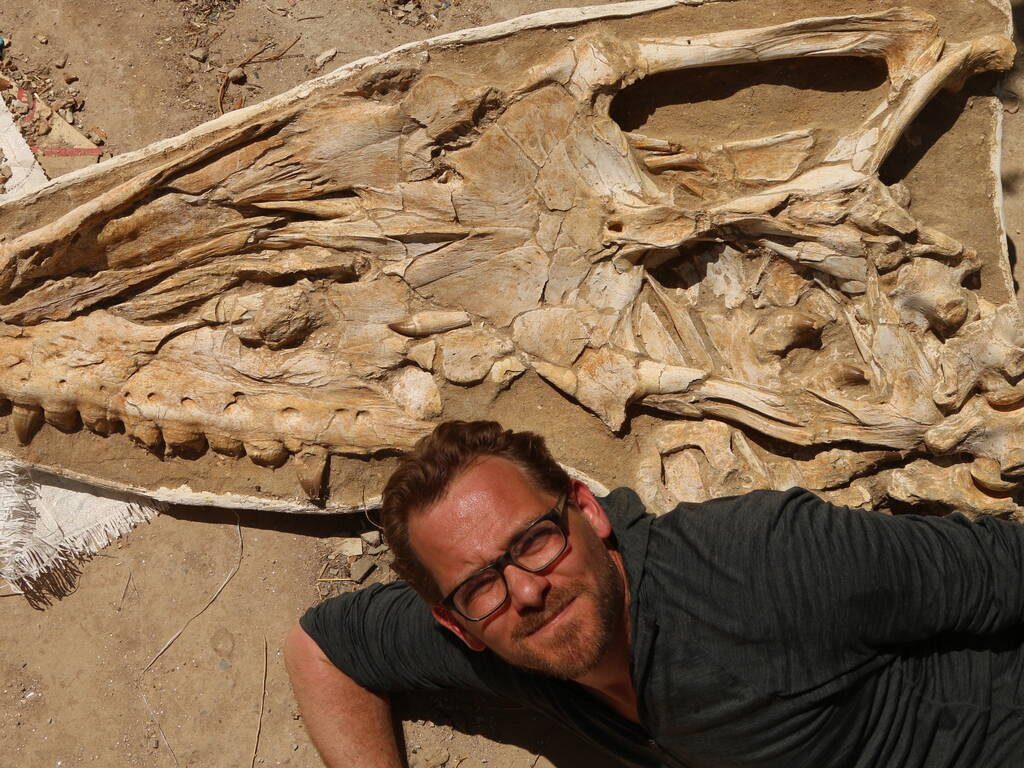Scientists have discovered the fossils of a huge new mosasaur – a giant sea-dwelling lizard – in Morocco.
Named Thalassotitan atrox, the apex predator had jaws and teeth like those of killer whales, and hunted other marine reptiles— plesiosaurs, sea turtles, and other mosasaurs.
At the end of the Cretaceous period, 66 million years ago, sea monsters really existed. While dinosaurs flourished on land, the seas were ruled by mosasaurs or giant marine reptiles.
Mosasaurs weren’t dinosaurs, but enormous marine lizards growing up to 12 metres (40 feet) in length. They were distant relatives of modern iguanas and monitor lizards, and looked a bit like today’s Komodo dragons with flippers instead of legs, and a shark-like tail.
The new mosasaur evolved to prey on all the other marine reptiles – making it a truly monstrous sight.
The remains of the new species were dug up in Morocco, about an hour outside Casablanca. Here, near the end of the Cretaceous, the Atlantic flooded northern Africa.
Nutrient-rich waters upwelling from the depths fed blooms of plankton. Those fed small fish, feeding larger fish, which fed mosasaurs and plesiosaurs – and so on, with these marine reptiles becoming food for the giant, carnivorous Thalassotitan.
Thalassotitan had an enormous skull measuring 1.4 metres (five feet long) and grew to nearly 30 feet (nine metres) long, the size of a killer whale. While most mosasaurs had long jaws and slender teeth for catching fish, Thalassotitan had a short, wide muzzle and massive, conical teeth like those of its whale doppleganger. These let it seize and rip apart huge prey. These adaptations suggest Thalassotitan was an apex predator, sitting at the top of the food chain. The giant mosasaur occupied the same ecological niche as today’s killer whale
Dr Nick Longrich, senior lecturer from the Milner Centre for Evolution at the University of Bath, was the lead author of the study. Full results have been published in Cretaceous Research.







